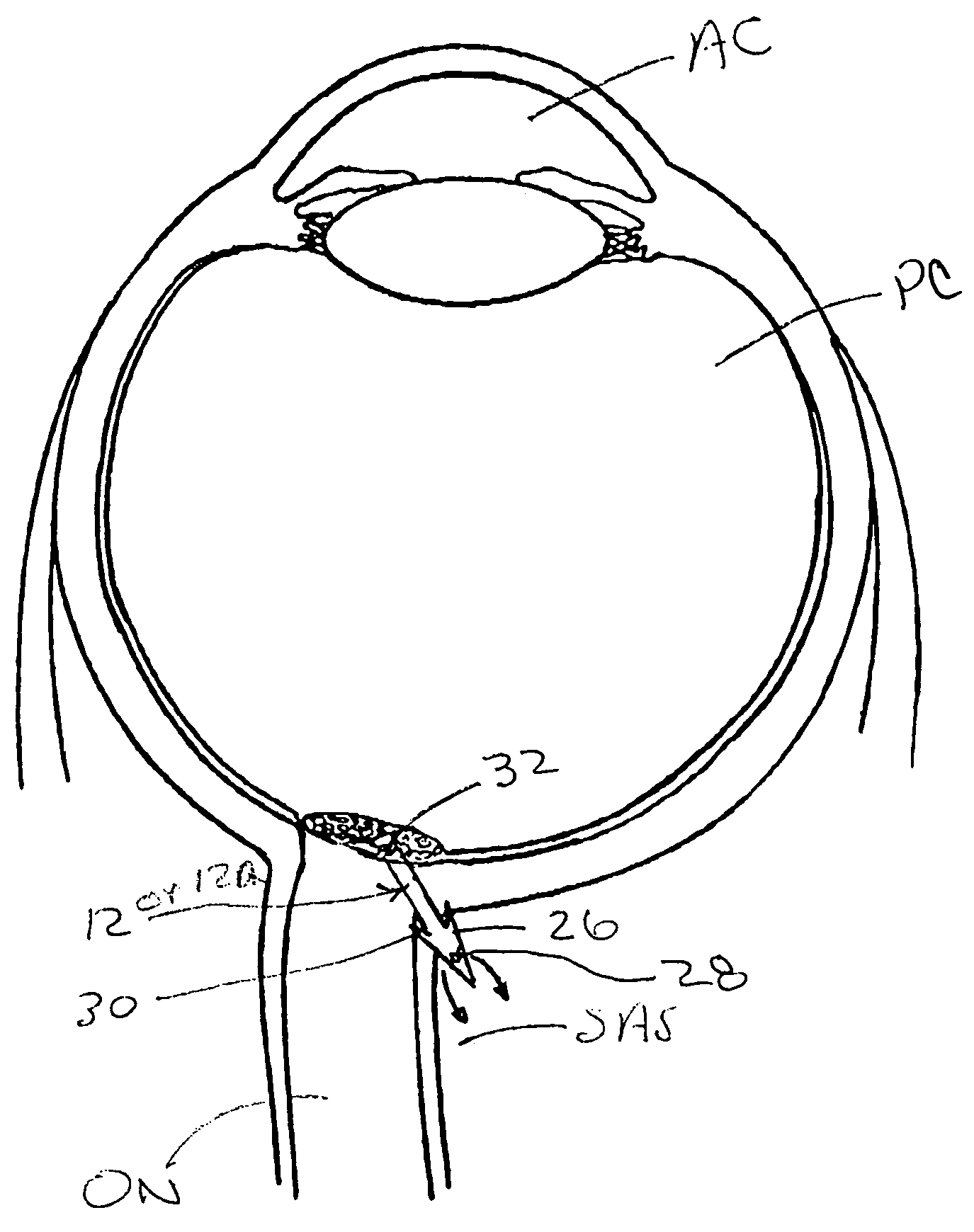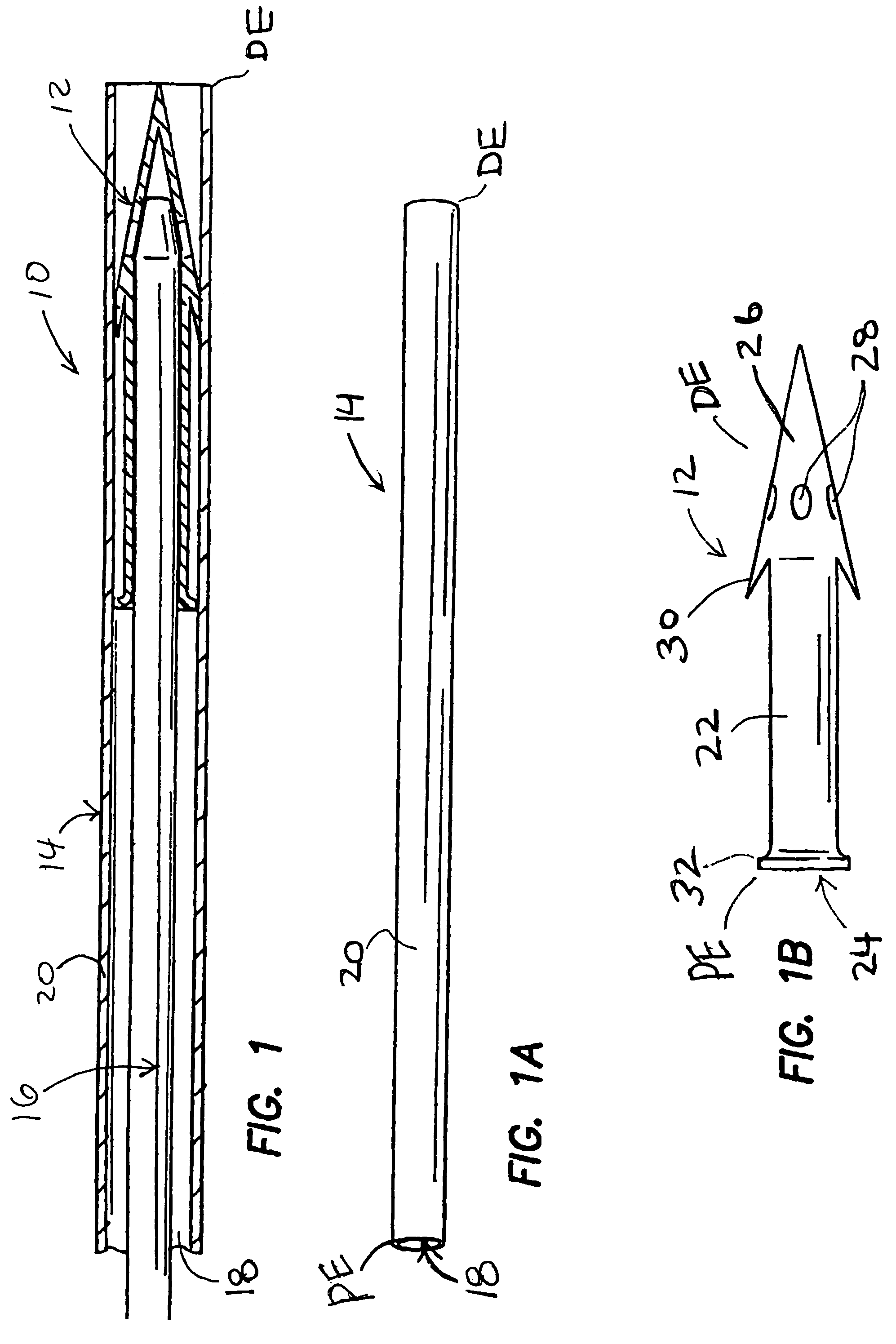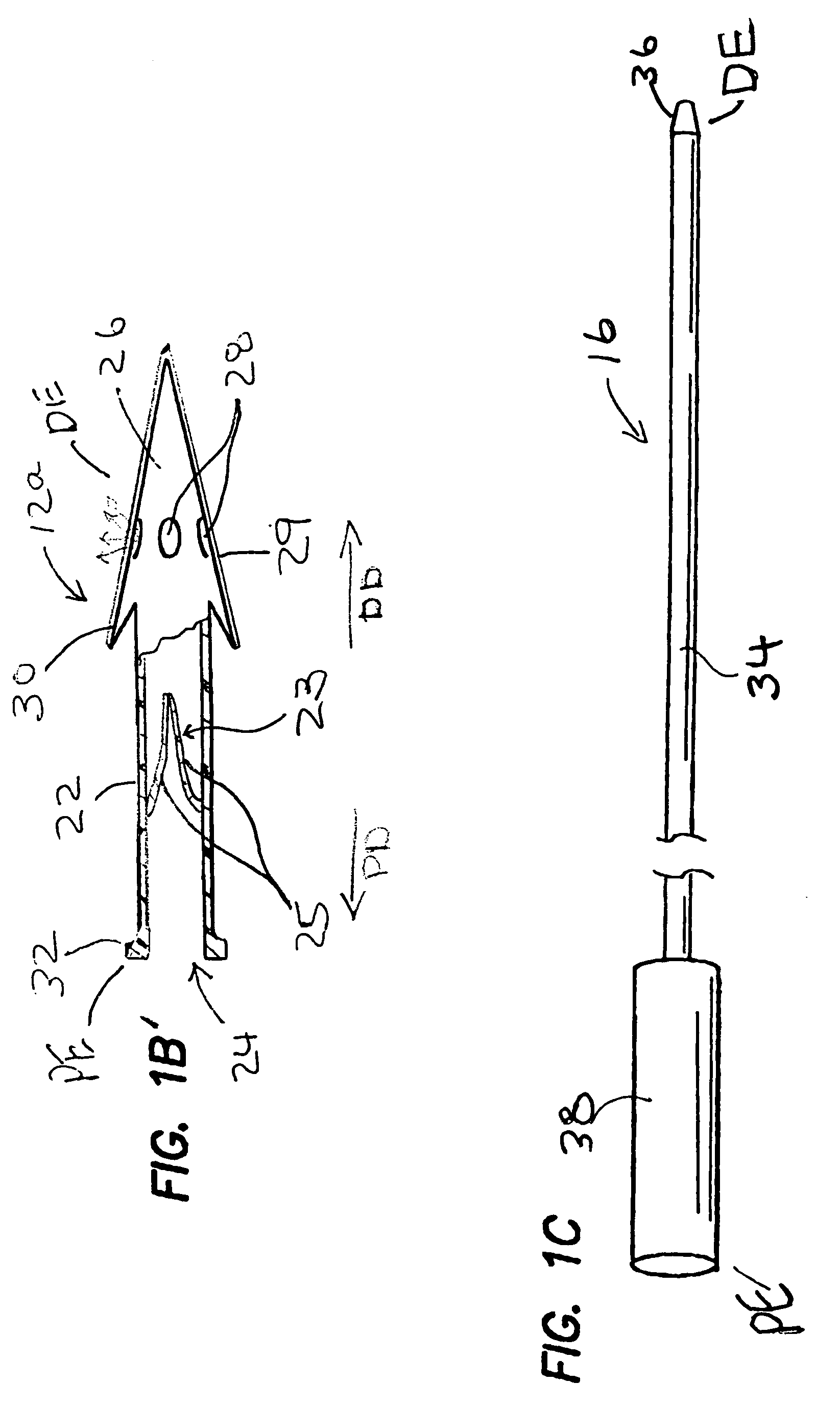Methods and devices for draining fluids and lowering intraocular pressure
a technology of intraocular pressure and draining fluid, applied in the field of medicine and surgery, can solve the problems of abnormally high intraocular pressure, inferior and superior damage to produce characteristic arcuate defects, and the lamina cribosa is not well supported, so as to prevent unwanted backflow of fluid and prevent or deter clogging of the shunt devi
- Summary
- Abstract
- Description
- Claims
- Application Information
AI Technical Summary
Benefits of technology
Problems solved by technology
Method used
Image
Examples
Embodiment Construction
[0025]The following detailed description and the accompanying drawings are provided for the purpose of describing certain non-limiting examples or embodiments of the invention only. This detailed description is not intended to describe all possible examples and embodiments of the invention and, thus, shall not limit the scope of the claimed invention in any way.
[0026]FIGS. 1-1C show one embodiment of a system 10 for implantation of a shunt device 12 in accordance with the present invention. This system 10 generally comprises the shunt device 12, a cannula 14, and a pusher 16. As shown in FIG. 1, the shunt device 12 is initially positioned within the lumen 18 of the cannula 14 and the pusher 16 is positioned in the lumen 18 of the cannula 14 behind the shunt device 12 such that the pusher 16 may be used to push the shunt device 12 out of the distal end DE of the of the cannula 14. One way of performing this shunt-expulsion procedure is shown in FIG. 2A and is explained in detail here...
PUM
 Login to View More
Login to View More Abstract
Description
Claims
Application Information
 Login to View More
Login to View More - R&D
- Intellectual Property
- Life Sciences
- Materials
- Tech Scout
- Unparalleled Data Quality
- Higher Quality Content
- 60% Fewer Hallucinations
Browse by: Latest US Patents, China's latest patents, Technical Efficacy Thesaurus, Application Domain, Technology Topic, Popular Technical Reports.
© 2025 PatSnap. All rights reserved.Legal|Privacy policy|Modern Slavery Act Transparency Statement|Sitemap|About US| Contact US: help@patsnap.com



